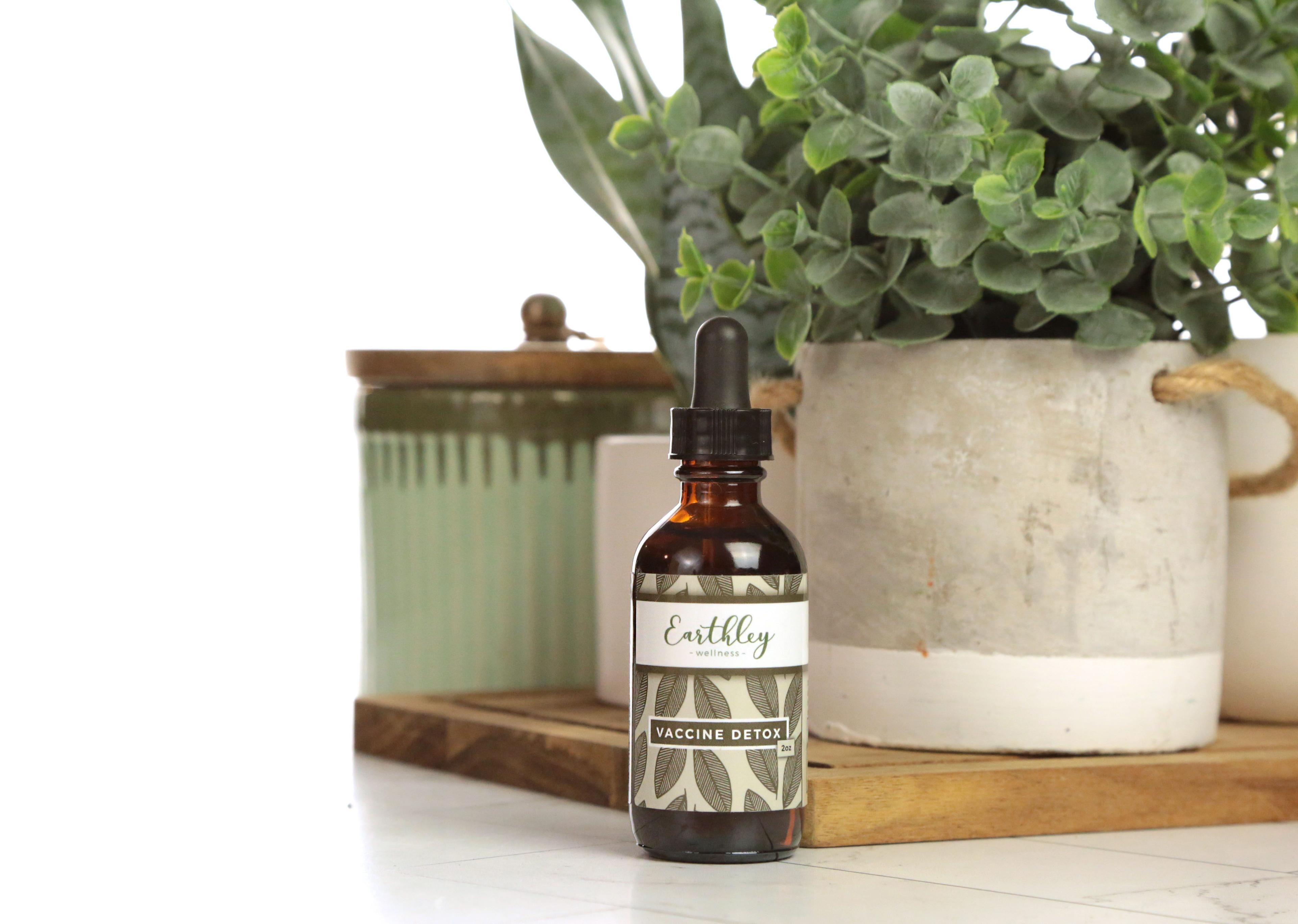The True Risks of Public Pools (and a DIY)

Have you ever wondered what is really lurking in public pool water? Over the years, the debate about the safety of pool water became more diverse. At one time, the research was only on the chemicals used to clean the water. Now, they are realizing there are other concerns. These include what's in the tap water itself, the contamination from other swimmers' skin (think sunscreen), and more.
The conversations started off very promising with studies coming out and concerns being considered. Then, sensationalism happened. The old “oh, we swam in it, and we are fine!” dismissal tones to “don’t – you will give your child cancer if you let them go in the water!” Let’s take the dismissal and guilt out while we talk about it, one concern at a time!
Risks of Pool Maintenance Chemicals
Swimming in the local public pool with family and friends shouldn’t feel worrisome. It should just be a time for good, clean fun! Keeping pools clean can take quite a bit of work, though. To keep the water safe from bacteria, viruses, algae, and other toxins, strong chemicals are used to disinfect the water.
Disinfectants work by breaking the chemical bonds that hold the toxin together. There have been a lot of studies done over the years to help determine the necessary amount of chlorine. For example, how much chlorine really needs to be used? How often does it need to be added to stay effective? How much stabilizer is required to regulate the chlorine dissipation? How much water replacement is needed per swimmer each day to keep the water safe? The local pool chemists have to do a lot of math and science to keep pools safe!
Chlorine
The most common disinfectant used is chlorine. The levels have to be calculated carefully because chlorine is classified as an irritant, acute toxic, oxidizer, and an environmental hazard. It must be diluted and stabilized to a safer but still effective level. Chlorine works by stealing the electrons holding the toxin together. This is called oxidation. This process creates a waste byproduct. Chlorine itself actually has no smell until it mixes with sweat, urine, or other chemicals; then, it creates the waste byproduct, chloramine, that has that "pool" characteristic scent.
Chlorine (and the many byproducts it makes) can be absorbed through the skin, ingested with the water, and inhaled. Exposure to chlorine, at even low levels, can cause eye, skin, and lung irritation.
Because it opens the pores and removes the protective, natural oils on the skin, it can cause dry skin, rashes, burns, and blisters.
Between chlorine and its byproducts, there are many risks:
- Breathing issues
- Lung damage is possible at *usually* higher levels (some people are more sensitive and can react at lower levels as well).
- Headaches
- Dizziness
- Chest tightness
- Coughing
- Other asthma-like symptoms
- Fluid to build up in the lungs
- and many more risks
Be sure to watch for symptoms and remove yourself (or child) from the chlorinated area immediately, shower thoroughly, and wash clothing. It may be good to talk to the pool staff about their pool maintenance processes -- if nothing else, you will know what process doesn’t agree with your body so you can avoid it.
The presence of disinfection byproducts is being studied for its effect on the endocrine system. Endocrine disruptors alter our body’s hormones. That can lead to many concerns and a whole array of conditions when our body’s hormones become unbalanced.
Here are some more studies discussing this still fairly new research into endocrine disruptors and byproducts:
- https://pubmed.ncbi.nlm.nih.gov/31831230
- https://pubmed.ncbi.nlm.nih.gov/31689635/
- https://www.sciencedirect.com/science/article/pii/S0160412018310559
- https://pubs.acs.org/doi/full/10.1021/acs.est.6b00808
Learn more about hormones imbalances in this FREE guide: What No One Tells You About Hormone Balance
Bromine
Another common disinfectant is bromine. It works by breaking apart the chemical bonds of toxins forcing a change of the electron charge, a process called ionization. Bromine is a chlorine-based chemical. If you are sensitive to chlorine, you likely are sensitive to bromine as well. Bromine is said to be the “safer” option when meticulously maintained for warm water conditions that are not exposed to ultraviolet radiation making it more common in spas and indoor hot tubs.
Bromine, in high quantities, is classified as corrosive, acute toxic, and an environmental hazard. It can be absorbed through the skin as well as ingested and inhaled. Like chlorine, it can cause dry skin, rashes, burns, watery eyes, acne, abdominal pain, and cardiac arrhythmia. If these signs occur, leave the area to fresher air immediately, shower thoroughly, and wash clothes.
One of the many alarming effects it can have on the body is its ability to displace iodine, disrupting the function of the thyroid. The thyroid is a major player in our body’s hormone maintenance, making bromine an endocrine disruptor, too.
It is mentioned in section 13.1.1. of https://pubchem.ncbi.nlm.nih.gov/compound/Bromine#section=Toxicological-Information as well as in this study from 2020 https://www.ncbi.nlm.nih.gov/pmc/articles/PMC7139484/.
Hydrogen Perioxide
Hydrogen Peroxide (3%) is common in many households for cleaning and disinfecting wounds. For pool cleaning it requires 35% hydrogen peroxide, often called “food grade.” It does need close monitoring of levels and additional cleaners to break up fungi and bacteria. Ultraviolet radiation from the sun can (sometimes) fill that gap for outdoor pools. Because of this downfall and costs, most public pools do not utilize it.
Hydrogen peroxide can cause eye, skin, and respiratory issues as well. Exposure can lead to dizziness, headaches, rashes, burns, nasal/throat irritants, lung damage, eye damage, and vomiting. It is classified as a mutagen, meaning it can change the DNA of a cell. It is also classified as an endocrine disruptor.
Research into hydrogen peroxide as an endocrine disruptor: https://pmc.ncbi.nlm.nih.gov/articles/PMC8014925/
That's Not All...What ELSE is In Your Pool?
Like mentioned earlier, there are other concerns about pools than just the disinfectants. These concerns come from the reaction of outside chemicals and organic matter to the disinfectant in the pool. The resulting chemical is called a disinfection byproduct, or a DBP. There have been over 600 DBPs identified in testing. While this may sound alarming, it does mean some of the power to reduce the danger is in our hands! That is a good thing.
Urine
In several studies testing public pools around the world, the highest levels of disinfection byproducts resulted from urea entering the pool water. Some urea is in sweat, but the vast majority comes from urine. In the studies conducted, they estimate that up to 1% of total pool volume may be urine!
If that wasn’t enough to gross you out, let’s talk about how it reacts to disinfectants. When urea (a nitrogen-rich molecule) reacts with chlorine, a DBP called trichloramine is created. Trichloramine also has that distinctive “pool” odor.
DBPs are classified as volatile chemicals. Volatile means it is easily be evaporated in the air at room temperature. Trichloramine was found in studies to be the most abundant volatile DBP. When inhaled, it has been linked to respiratory concerns such as (source):
- asthma
- acute/chronic lung disorders
- decreased pulmonary function
- nasal and throat irritation
- upper respiratory infections
Pool employees and professional swimmers with prolonged exposure rates have an increased risk of these concerns.
Not just urea in the urine is a concern, but other substances in urine such as artificial sweeteners, medication/drugs, and even caffeine can end up in the pool water. Some sweeteners are not absorbed at all by the body so they are completely excreted in urine. While sweeteners are not absorbed very well topically, there is still the possibility of swallowing them.
Feces
It is figured that 2 pounds of feces for every 100 kids may be in pool water. Feces carry many possible bacterial, viral, parasitic, and other microbes that can cause disease and infections. A couple examples are E Coli and Cryptosporisium.
According to surveys conducted, many swimmers continue to go to public pools despite having diarrhea. Diarrhea is a common symptom with many of these toxins and also how they are spread. Many of these toxins may also require increasing the amount of disinfectant to destroy the toxin.
Sunscreen
With increasing skin cancer rates the past few decades -- and their recommendation for using sunscreen keeps increasing on a similar rate, more people are wearing sunscreen, reapplying frequently when swimming in the water, and even using it daily for months!
One common ingredients in mainstream sunscreen is avobenzone. This breaks down into multiple different chemicals during its reaction to the chlorine, ultraviolet radiation, and water. Up to 60 different DBPs have been recognized as a result of avobenzone’s reaction in chlorinated and brominated water.
Another common ingredient is octocrylene, which is often found in high concentrations (10% or more) of sunscreens. Here are some interesting studies on it:
- Impaired expression of genes related to metabolism and development in the brain linked to octocrylene: https://pubmed.ncbi.nlm.nih.gov/24463256
- Octocrylene is a contact and photocontact allergen: https://pubmed.ncbi.nlm.nih.gov/21504434/
- Octocrylene toxicity: https://pubmed.ncbi.nlm.nih.gov/34010734/
- Estrogenic toxicity from octocrylene: https://pubmed.ncbi.nlm.nih.gov/32045793/
A disturbing note, these reaction are happening right there on the skin! The toxicity of many of these DBPs have not even been studied yet. The few that have, have shown their ability to be inhaled, ingested, and absorbed through the skin. As studies are continuing, hopefully we will learn more. Some show signs of being endocrine disruptors or mutagenic.
Even before DBPs are created from the sunscreens, many of the ingredients have less-than-desirable effects on humans and animals. These chemicals are mostly absorbed through the skin. For example, Benzophenone is another common ingredient in sunscreen that has been proven to bioaccumulate in humans (through urine testing in high concentration), and shows a possible link with women being diagnosed with endometriosis (a condition that is linked to hormones and is on the rise). Like avobenzone, benzophenone is an endocrine disruptor.
Farm Runoff
Most pools are originally filled with tap water, which presents its own set of concerns -- pesticides, herbicides, and other runoff chemicals. Chemicals like altrazine and alachlor have been found in groundwater. Many areas have begun testing for this. If you do a search with your state and “well water testing,” then you should be able to learn more about your local water concerns. Do these react to disinfectants? Many are known to create DBPs.
Some of these chemicals have been linked to epigenetic tumor promoters, neuropathy, endocrine disruption, and muscle contractions in the heart and uterus. Sources: https://pubmed.ncbi.nlm.nih.gov/39279140/ and https://pmc.ncbi.nlm.nih.gov/articles/PMC6136926/.
Prescription Drugs
A couple of decades ago, the studies indicated pharmaceutical drugs were showing up in water treatment plants and other sources of water, like pools. Drugs are not fully metabolized by the body. The remaining drugs are excreted through urine , sweat, or stool and flushed into the water system - maybe right into your pool! All these sources continue to build contamination. Unfortunately, there has also been a huge increase in pharmaceutical drugs being prescribed since a couple of decades ago.
In swimming pools, some drugs will be reduced by chlorination and possibly become DBPs, like acetaminophen and naproxen. There are other drugs that react very slowly to chlorine causing them to linger, such as ibuprofen, DEET, and caffeine. This study shows us that pharmaceuticals as well as illicit drugs can be found in pool water.
Now the question begs, can other pool goers absorb them while swimming? There is a clear potential for inhalation, ingestion, and absorption. There seems to be a lack of studies that look closely at heavily prescribed drug’s potential to affect other swimmers.
Okay, so that's a lot about the risks of swimming pools! Does this mean you have to completely give up swimming this year - even on the hottest days of summer? Nope! There are ways to minimize the risks and still get to enjoy the water!
Home Pools
Home pools have become even more popular the last couple of years. Whether you have a small kiddie pool or a larger pool, dealing with toxins is necessary.
If the small pools are cleaned and refilled often, a good water filtration system may be all the equipment you need. Match that with teaching the little ones not to pee in there or put the pool water in their mouths and the risks should be low.
Salt water filters
These are an option for larger pools. Salt water filters do create chlorine to disinfect the pool, but it is at a much lower level than regular chlorine pools. That is because the chlorine is being slowly and continuously created. Whereas the other options are much higher amounts of chlorine at once with additional stabilizers to keep it regulated. Well maintained, salt water filter pools are more gentle on the skin and eyes. With less chlorine, there are lower quantities of DBPs as well.
And yet another positive of a home pool is that you know exactly who is swimming in it! Exposure to fewer people means less chance of contaminants.
Hose filters
If you are filling your own pool with tap water, be sure to have a water filtration system. This will reduce the amount of incoming toxins. If a whole house isn’t an option at the moment, consider getting a filter for just the end of the hose. This hose filter removes bacteria and chlorine. These filters are made with the same types of materials as house filters and can remove chlorine, chloramine, and many of the other chemicals mentioned. The level of filtration varies to allow for faster flow and more specific filtering.
Lakes/Rivers
Swimming in nature’s pools has been a long tradition. With the ever growing amount of toxins sprayed, flushed, and buried, it is hard to know what leaks into the groundwater. As the water feeds the nearby lakes or rivers, toxins are being found all across the country. The local extension offices or, in some areas, online county websites have test results of water testing.
It is important to be aware of potential contamination. However, the ecosystems of the lakes and rivers may make it worth the swim if there is not major contamination or other hazards. The sand, rocks, and plant life mixed with the flowing water helps to remove many toxins.
How to Safely Enjoy the Pool
In short, like everything, there is always a danger; but there are many ways we can reduce the risks. There are options outside of public swimming pools that may be even safer. If you do not swim often, then being aware of the symptoms mentioned and avoiding overly strong smelling pools is probably alright. Opening the conversations while helping look for healthier solutions is always a move in a better direction.
Ways to minimize the effects of public pools:
#1 Pre-shower:
Shower before entering a pool. This does 2 things to protect you:
- Wet, hydrated skin and hair can decrease how much disinfectant, DBPss, and other things are absorbed by your cells.
- Washes away debris and many chemicals that you may bring into the water.
#2 Post-Swim Showering:
Shower immediately after swimming to remove the disinfectants, lingering DBPs, and other things as much as possible.
- Exfoliate: Both to remove dead skin cells that may have absorbed these chemicals and to help get the lymphatic system moving to detox any already absorbed toxins.
- Moisturize: Replenish the good oils on your skin with a natural oil based moisturizer like our antioxdant supporting Sun Soothe!
#3 Avoid Toxins:
Avoid wearing toxic lotions, sunscreens, soaps, and other harsh chemicals when entering the pool. Try natural sun lotions that help protect and support the skin like Sun Shield.
If you suffer from a lingering issue after swimming, consider limiting your exposure to pool water.
#4 Vitamin C:
Vitamin C is a great antioxidant that helps your body recover from these exposures. Internally consuming vitamin C is the most effecient way to utilize this. We offer a whole food vitamin C powder called Immune Aid made with camu camu, acerola berries, and orange peel (with a touch of whole leaf stevia for taste). Taking this daily can support your vitamin C needs!
Some people prefer to use a spray or lotion with vitamin C.
Lotions and sprays are available on the market as well as homemade recipes that claim to protect the skin from chlorine while swimming. These commonly use a form of vitamin C (usually synthetic/isolated) to neutralize the chlorine and a thicker oily ingredient to protect the skin from chlorine’s drying action. Some mainstream products even utilize petroleum based ingredients for that!
When petroleum meets chlorine, the DBP hydrochloric acid is formed. This acid is corrosive to the eyes, skin, and mucous membranes – it is one of the acids stomachs use to break down food. Inhaling this can cause respiratory tract irritation and inflammation.
Homemade recipes vary, but usually, it is ascorbic acid and sodium ascorbate mixed with water. Hopefully, this water doesn’t have chlorine in it already, thus breaking down the ingredients before even hitting your skin. Vitamin C is very water soluble. Also when ascorbic acid or sodium ascorbate meet chlorinated water, these break down with the chlorine to form hydrochloric acid and dehydroascorbic acid.
The lotion version usually suggests the same vitamin C components mixed with coconut oil. This is to prevent the chlorine from reaching the skin for a longer period. At this time, the research to prove or disprove this is not available. There is not much information on how often one needs to reapply during swimming either.
While there are many topical products that claim to block the effects of chlorine, the research isn't there yet on these work or if they could actually increase the risk posed by interacting with chlorine to form DBPs.
If you would like to try it and see if it helps you, we suggest:
DIY: Vitamin C Spray
Ingredients:
- 1 tablespoon of Immune Aid
- 1 cup of warm filtered water (warm so the oil can mix better)
- 1 teaspoon of coconut oil (so the vitamin C doesn't dissolve in the pool water as fast)
Directions:
Step 1: Mix all ingredients together.
Step 2: Pour into a spray bottle
Usage:
Shake well before use. Spray on before going in pool water. Reapply as needed.
Storage:
Make fresh for each pool visit -- will not store well! In the refrigerator, it may extend to 2 days at most.
#5 Bodily Functions
- Do not pee or poo in the pool! Adults and children may need reminding, but this is very important.
- Do not drink the pool water.
#6 Support Your Body
- As mentioned, Vitamin C has the antioxidant properties to neutralize chlorine. One way to stay protected is to consume plenty of whole food vitamin C like our Immune Aid. Vitamin C works to help support the immune system, support cell repair, and support collagen production to keep the skin healthy. Camu camu fruit, acerola berries, strawberries, and citrus fruits are great sources of whole vitamin C.
- Replenish your skin and hair with natural oils like mango butter, apricot oil, or jojoba oil after thoroughly showering. Our Sun Soothe or Good Night Magnesium Lotion are great choices!
- Support your body’s natural detox process - the liver, kidneys, lymphatics, and digestive system. This is an act you can benefit from all the time whether in the water or not! We recommend Liver Love, Vaccine Detox, Lymphatic Cream, and Gut Health Oil.
Check out these products!
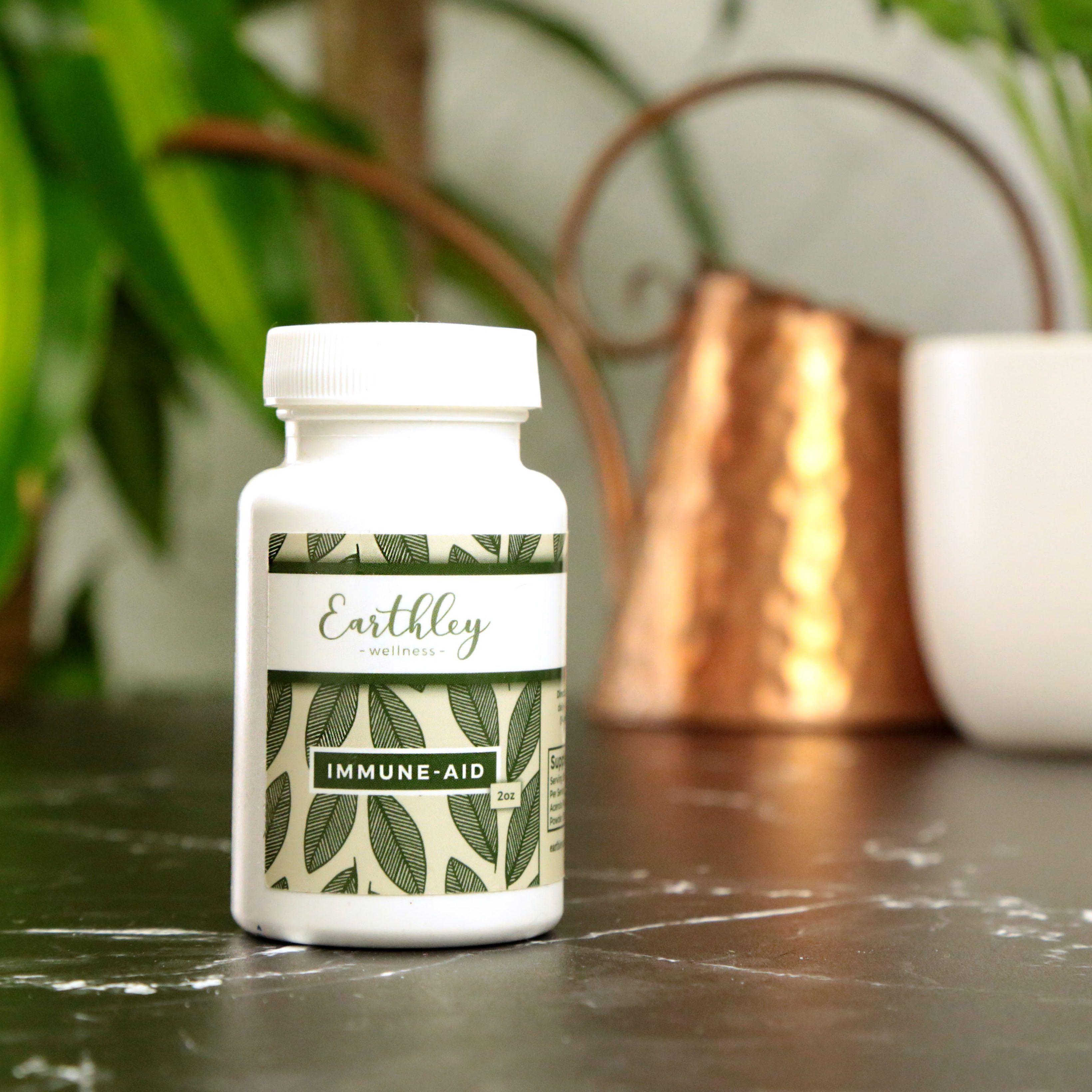
A super food vitamin C source
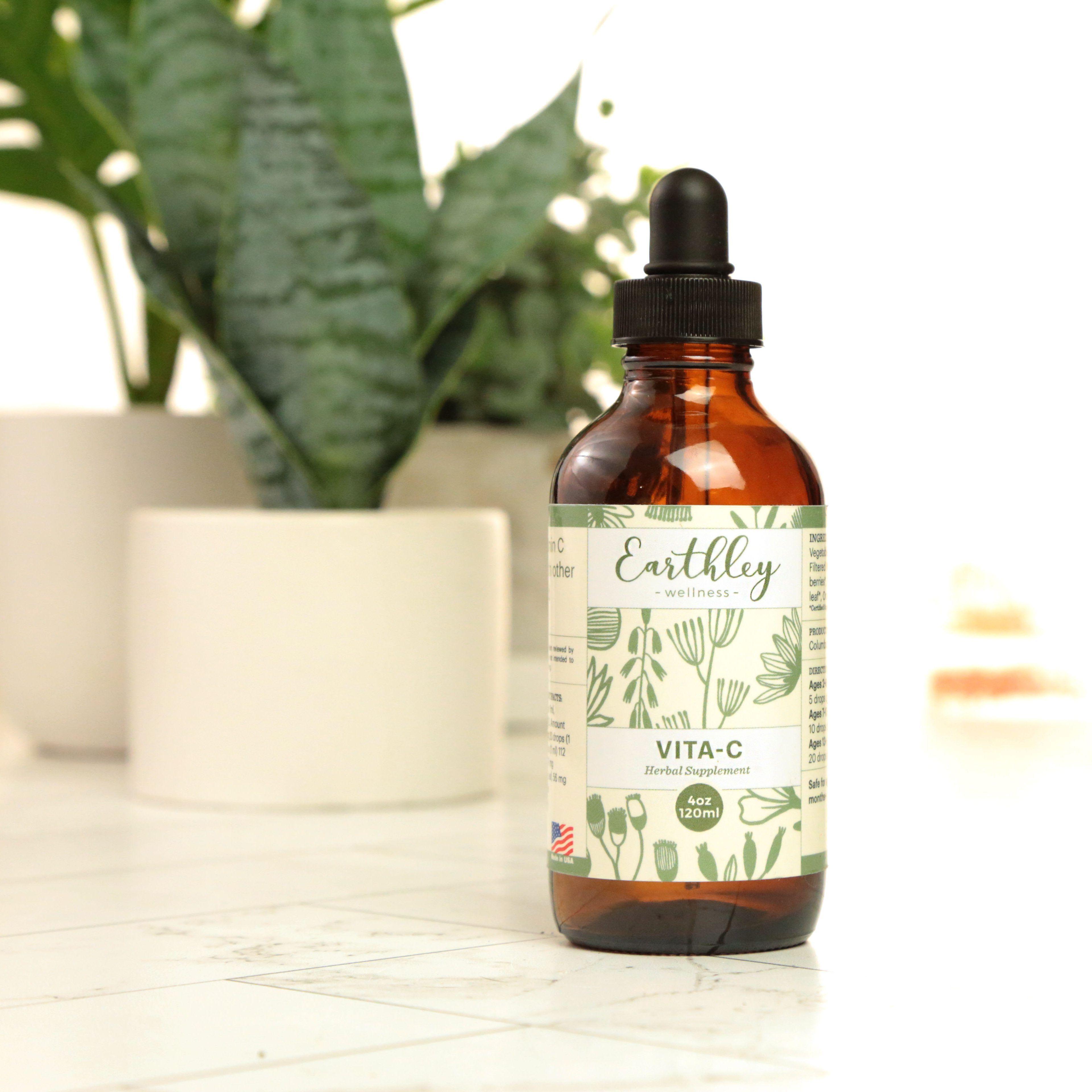
Natural vitamin C complex with other vitamins and minerals
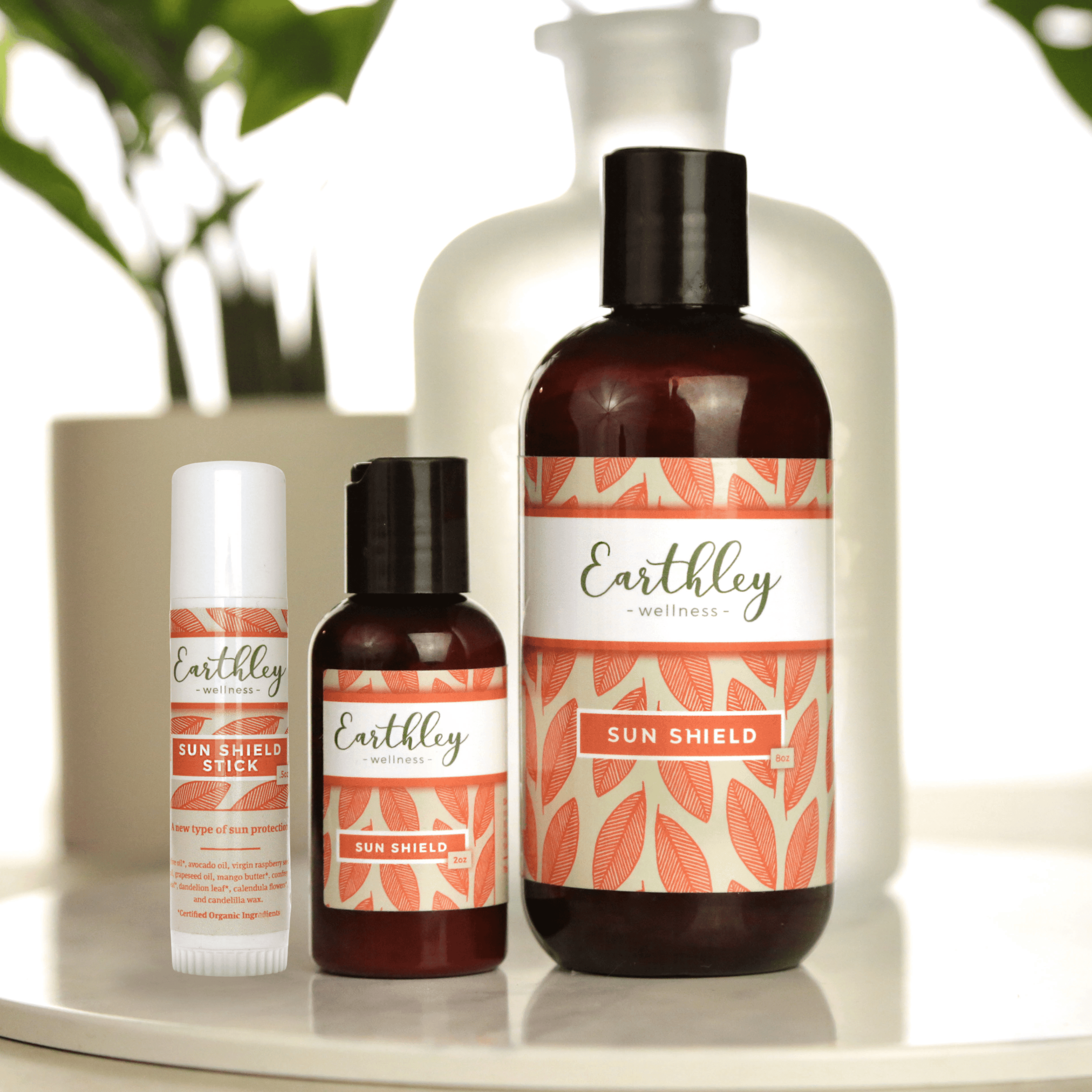
To protect skin from sun on a cellular level
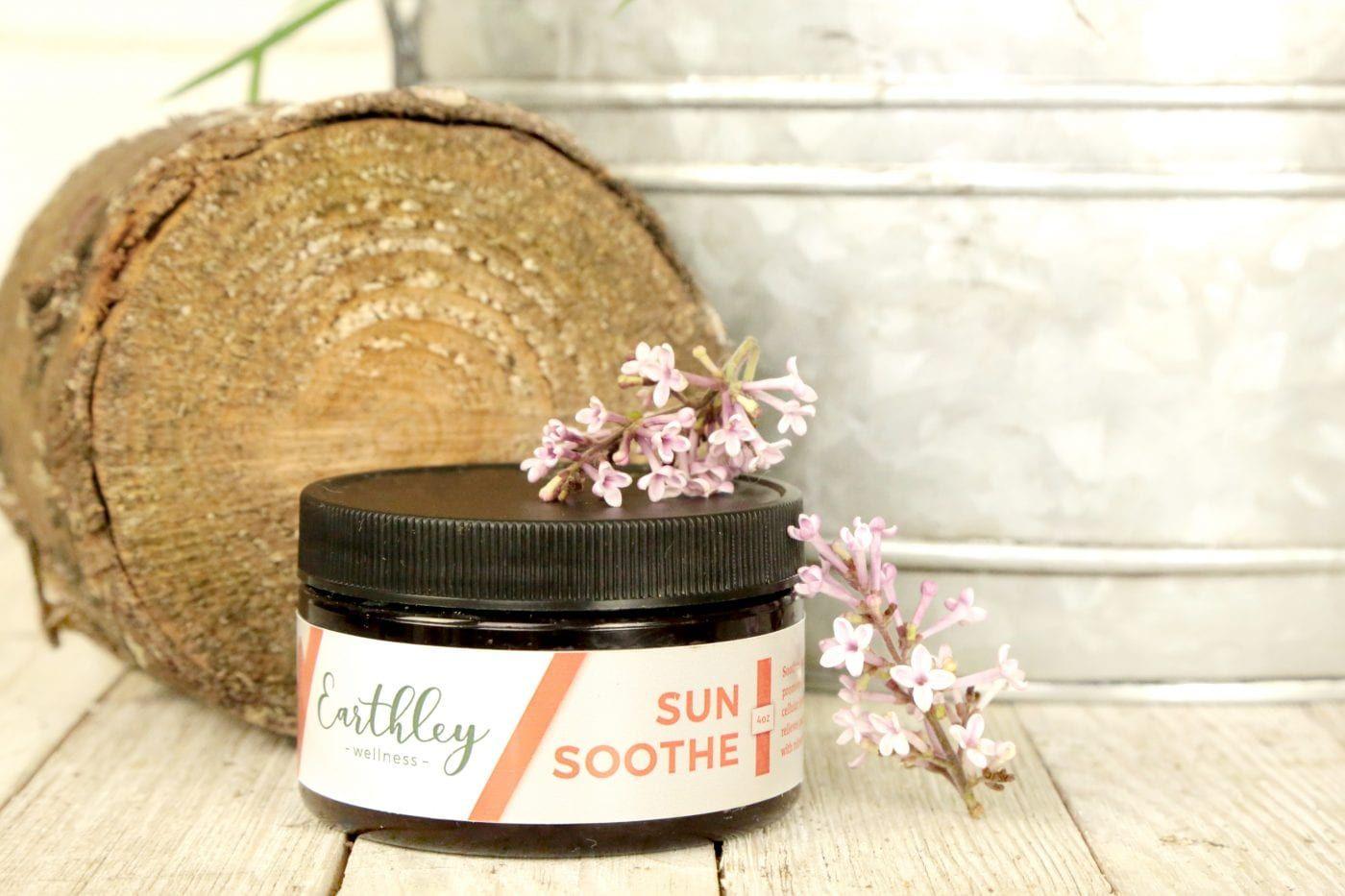
To soothe skin
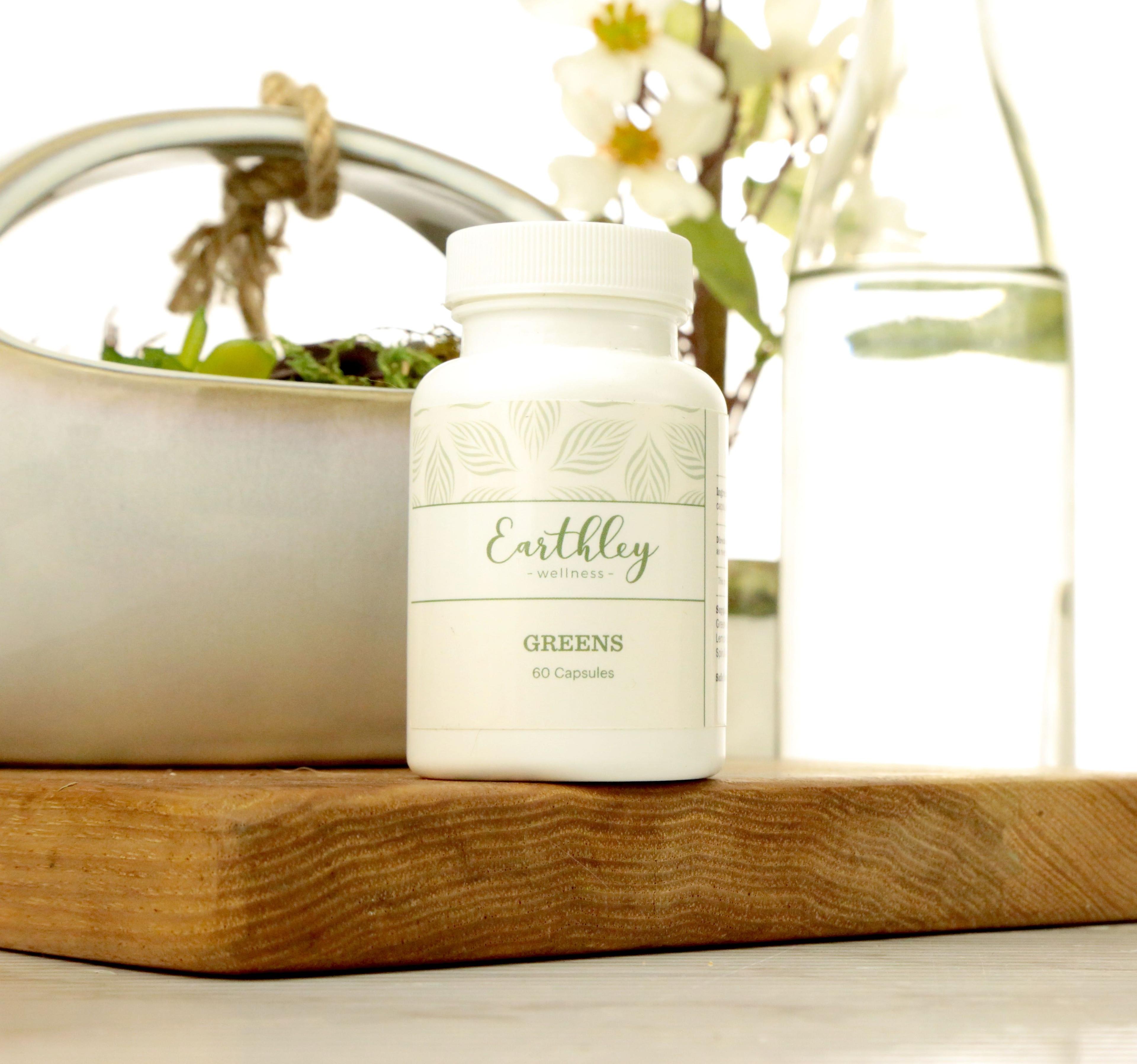
Provides natural energy and balanced nutrition

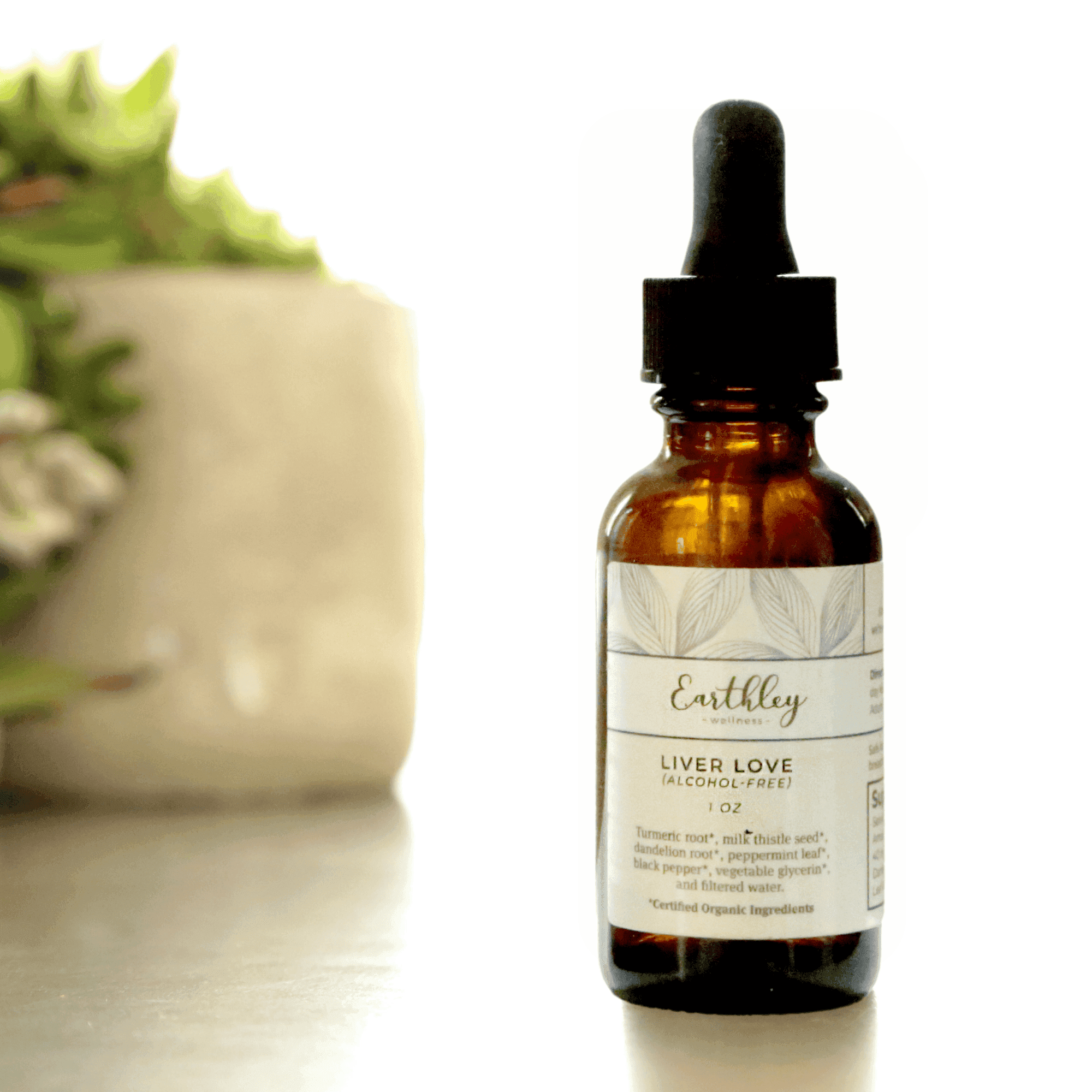
To support healthy liver function
